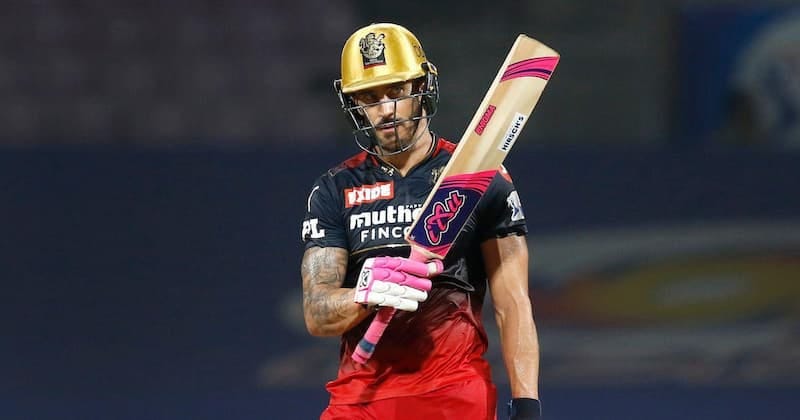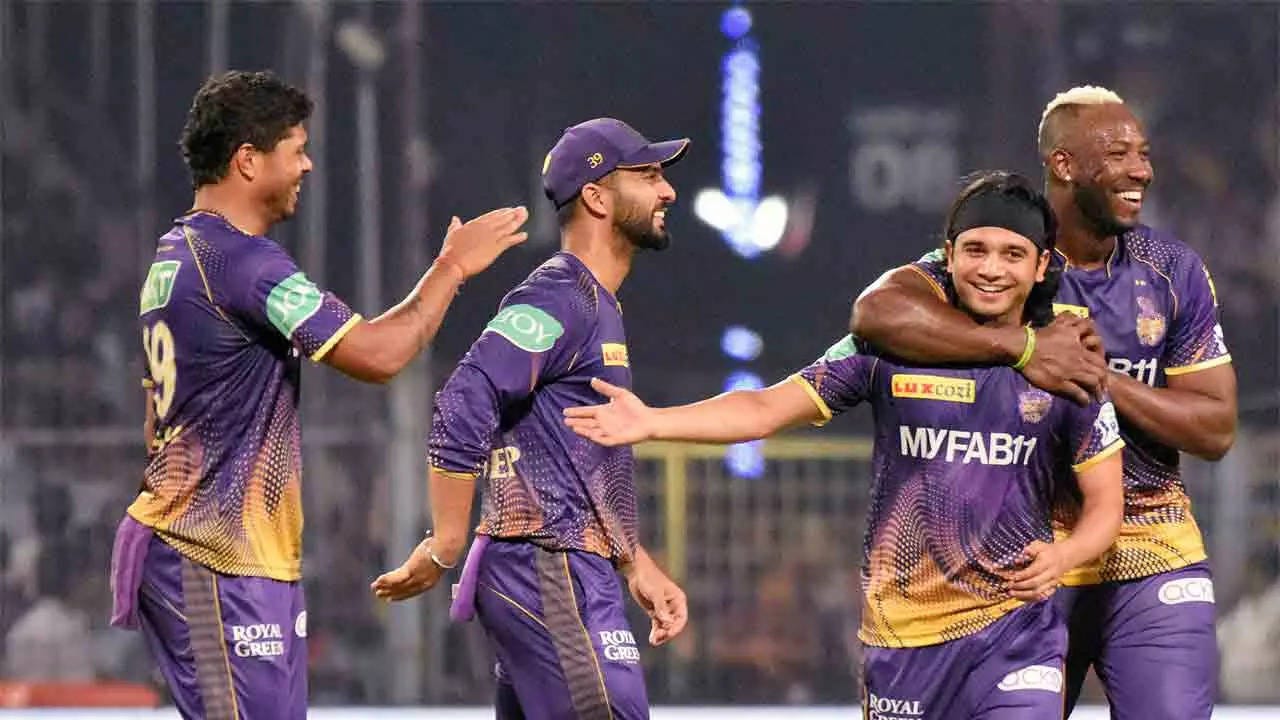The IPL is over-flowing with underperformers, and it doesn't take much to find them amidst the frenetic action of smash-and-grab T20 cricket.
Firstly, it’s critical to recognise the difference between underperformance and underachievement. Underperformance refers to the failure to meet collective expectations, whereas underachievement pertains to the inability to reach stated goals despite having the perceived potential to do so.
Underperformance is on the player, whereas underachieving might be a combination of factors, such as a coach or franchise expecting too much from a player. Or, the players themselves being unrealistic in their goal-setting.
Generally, from a coaching perspective, it is crucial to identify whether an individual is underperforming or underachieving to provide the appropriate support and resources needed to change the direction of their performance.
Easy to say, challenging to do in the T20 world. T20 wears out the cliched phrase: Form Is Temporary, Class Is Permanent.
SpeakingNick is a reader-supported venture. Free and paid versions are available. The best way to support me is by taking out a paid subscription.
Accountability takes on a new meaning in the IPL; it's like a play from the urban dictionary. Rather than "meeting an obligation to show responsibility for one's actions", you might replace the definition with the antonym "show no liability for one’s decision-making."
Yes, I hear you; in T20 cricket, situations or entry points demand that players take high-risk actions. Granted. However, the most successful players in this format balance that risk with measured practicality. It is absolutely true that "one ball can change a game" in T20 cricket. The challenge facing the players is: at what point and with which ball?
We are now 36 games into IPL 2023—almost half-way. Last night’s game saw the fancied Royal Challengers Bangalore (RCB) lose at home to the Kolkata Knight Riders (KKR).
RCB’s lauded batting triumvirate of Faf du Plessis, Virat Kohli, and Glenn Maxwell failed to chase down KKR’s impressive 5–200.
A first-innings score of 200 is more than acceptable and will generally win you more than you lose at this level—of course, that’s a subjective viewpoint.
Presenting this particular game as a dataset to substantiate my observations might seem arbitrary—some might say, much like the narrative itself!
Nevertheless, we will.
RCB’s Shahbaz Ahmed had a night to forget. In the 2023 IPL auction, the Bangalore franchise acquired the services of Shahbaz Ahmed for approximately 445,000 AUD. His solitary over went for 25—KKR’s Jason Roy clubbed four sixes— and when Shahbaz had the chance for retribution, he duly missed a sweep shot, making just two from five balls. That’s an economy rate of 25 and a batting strike rate (SR) of 40!
To date in IPL 2023, Shahbaz has scored 42 runs from six hits with a SR of 107.69 and is yet to take a wicket. A questionable return on investment.
Enjoying the read? If you feel like it, I’d love if you’d share this post with your friends! Or, if you received it from a friend, please forward to another.
It is worth noting that when discussing the return on investments: Faf du Plessis was Cricket Australia’s marketing hook for their first foray into a pre-season draft—BBL11. Surprisingly, he was left on the table, along with other notables, with BBL teams choosing to back domestic talent ahead of marquee names. du Plessis currently leads the IPL 2023 batting list with 422 runs, averaging 60.29 and a SR of 167.46. Steady numbers in any investor's eyes!
So, if you think "one ball can change a game" needs corroborating, then look no further than the evidence presented last night. du Plessis raced to 17 from six balls, the team score was 0–31 from 2.1 overs, and Virat Kohli looked set at the non-striker's end—when doesn’t he?
Umesh Yadav had bowled the second over and conceded 19 runs—du Plessis hit the last two balls for six. In isolation, those two maximums might not mean too much when the overall six count for IPL 2023 is already in the 500s. However, if you choose to watch them in isolation, they are significant.
Yadav, an experienced and skilful campaigner, started the over with Kohli on strike. Both width and length allowed Kohli room to flash his hands through the line, resulting in an off side boundary. Yadav recovers with a combination of on-pace and slower balls, three singles ensued. Ball five—du Plessis on strike—was off-speed, du Plessis picked it from release, timed his bat-swing, a six over long-on resulted.
Ball six could have had two or three different variations. du Plessis picked Yadav’s pocket. He set for an on-pace into the wicket delivery, perfect, his smart thinking was rewarded. Yadav pitches short of a length and into the body, du Plessis, his front leg already cleared, lofts a flat-bat pull over wide mid-on for another six. du Plessis had won the battle within the war.
Over three, enter Suyash Sharma—Sharma is an orthodox right-arm leg-spinner; some label him a mystery spinner—he’s not—he just has a very quick arm through his action and a wicked fall-away googly. It’s been a fast rise for Sharma, who was only recently scouted from Delhi’s Under-25 development squad.
Sharma had little time to settle, with Kohli on strike for his first ball.
Predictably, Sharma went into the wicket with a wrong’un; he dragged it down; it might have gone further than it did; Kohli chose to punch to long-on for a single—there’s no doubting Kohli’s batting acumen. Remember, this is over three, and fielding restrictions are in place.
Ball two: Sharma gets the ball up above the eye line, and again, it was a wrong’un. No doubt that du Plessis picked this; du Plessis, giving himself room to go over long-on, connects on the inside edge, resulting in an overhead boundary catch by a relieved Rinku Singh. du Plessis gave way to the confused Shahbaz, who faced two dot balls before getting off the mark with a single. Sharma closed out the over to Kohli with another wrong’un and a single. His figures are 1-0-3-1. A battle was won.
du Plessis is RCB’s enforcer in the early overs; his aggression allows Kohli to play at his natural pace—extremely damaging. Their partnerships have been measured and impactful, with both batting deep into their team’s innings, allowing Maxwell to face fewer balls and, most importantly, to minimise the volume of his decision-making.
Trying to isolate a single ball that changes the trajectory of a game might be folly, certainly at that moment in time. However, during the course of a T20 game, I believe it is feasible to identify an over—with ball or bat—that will alter momentum. In Suyash Sharma, KKR can be thankful of his first over, there is no doubt it altered the probability of RCB chasing down the total. In fact, when you look at RCB’s winning percentage before and after their third over, it had dropped from 30% to 19%. A significant shift.
Already a subscriber, and you’re feeling in a giving mood? Why not gift a subscription; that would be a kind thing to do!
As for the underperformers, yes, there are many, and some, but not all, have legitimate reasons. For now, though, those without reasons can continue to risk heavily and reward themselves handsomely, often irrespective of any accountability.
Maybe I will get to the names in another column! For some reason I got lost in but ONE over of a smash-and-grab T20 game!
So, for now, I’m enjoying watching the IPL gravy train.
As always, thank you for being here.





